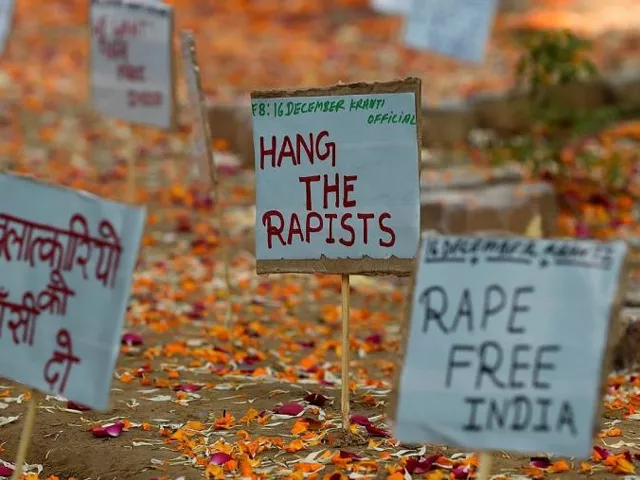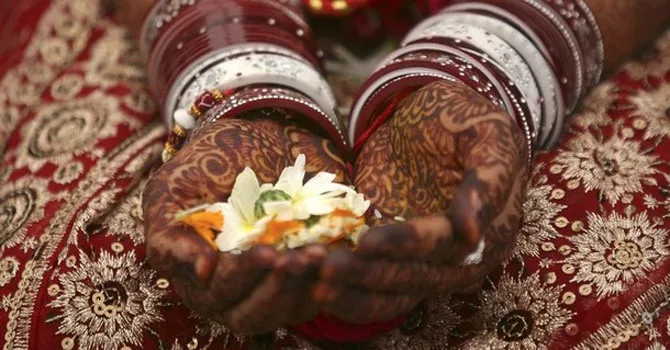
Perhaps Pakistan can learn a lesson or two from India’s judicial system
Legislators do not consider offences against women serious enough for legislations to be passed in favour of them.
A tree along the Jantar Mantar road in New Delhi, India – a place which resembles London’s Hyde Park for being a way too busy place to protest – is a stark reminder of a judicial revolution; a judicial revolution for the justice of women to be precise.
This is the same place where a massive campaign started off back in December 2012 in order to seek justice for the 23-year-old psychotherapy intern, Jyoti Singh Pandey who was gang-raped and brutally physically abused in a bus. Thirteen days after she was raped, she succumbed to her injuries and died at a hospital in Singapore.
I had the chance of visiting this place on August 11th and I found a few bouquets kept at the foot of the tree instead of the usual placards criticising the government. The place was eerily quiet, the loud chants for justice could not be heard and I wondered to myself, is the fight over already?
Yes, on the streets it is, because it’s being fought in the courts now. The sole purpose of courts is to address public grievances, but what’s so novel about the courts handing out justice?
It’s the fact that it happened because of a much needed revolution.
Pakistan and India suffer from similar gender-based disparities as well as problems with the judicial system, which faces criticism for the delay in dispensation of justice primarily due to the lack of resources. Journalists in Delhi were rightfully concerned, as they stated that the number of cases each judge had to hear totalled up to 50 or more per day. I’ve seen the cause list in Karachi, and nearly every judge in the Sindh High Court has to hear up to a 100 or sometimes even more cases daily.
So why is the civil society in India not out on the roads, protesting and seeking justice for those who are victims in sexual offence cases?
The answer lies in the fact that the state machinery did not take up temporary solutions by resorting to a defensive position or baton-charge hundreds of demonstrators, rather it looked for a permanent solution.
Criminologists say that crime can never be rooted out in any society, whereas jurists believe that law and punishments deter criminals. The Indian government set up a judicial committee tasked to study and take public suggestions in order to look for the best way to amend laws in order to provide quicker investigation and prosecution of sex offenders.
Around 80,000 suggestions were considered and finally the Indian President, Parnab Mukherjee, promulgated the Criminal Law (Amendment) Ordinance 2013. This amendment added new offences such as acid attacks, attempts to acid attack, sexual harassment, acts with the intention to disrobe a woman, voyeurism, and stalking to the Indian Penal Code.
A major breakthrough came when the Indian Chief Justice, Altamas Kabir, passed an administrative order, asking all the states’ chief justices to set up special courts to fast-track trials for sex crimes.
Now cases involving violence against women are heard in courts on a day-to-day basis. Subsequently, these trial courts conducted speedy trials and convicted the three accused for rape and murder in Jyoti’s case and awarded them the death sentence. Last March, the Delhi High Court dismissed their appeals, upholding the sentences.
It’s not just Jyoti’s case; the special courts are conducting fast-track trials in sex crimes all across the country.
This is the best example of how effective the legal and judicial system is, a system which dispenses speedy justice to survivors, who are somehow still a marginalised group in our society, even though it is the 21st century.
The judicial system regarding justice for women paints a completely different picture. Dozens of cases are pending, therefore creating a backlog. The prosecuting agencies are responsible for delays in achieving the goals set by the National Judicial Policy.
In 1987, the National Assembly promulgated the speedy trial courts for Speedy Trials Act, 1987 for speedy trials. Then the Anti-Terrorism Act, 1997 was enacted for the same purpose to ensure speedy trials. These courts primarily tried those charged with conspiring against the state, terrorism, extremism, etc. But it seems that the legislators do not consider offences against women serious enough in order for legislations to be passed in favour of them. Maybe we could learn a thing or two from the way the Indian judiciary handles their cases.


COMMENTS
Comments are moderated and generally will be posted if they are on-topic and not abusive.
For more information, please see our Comments FAQ